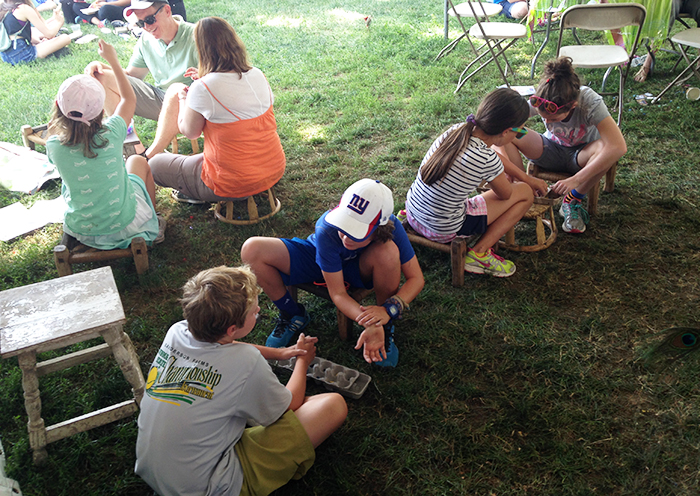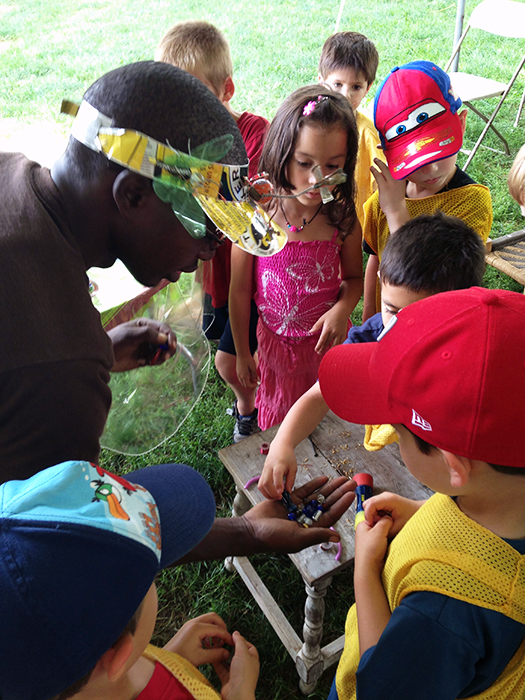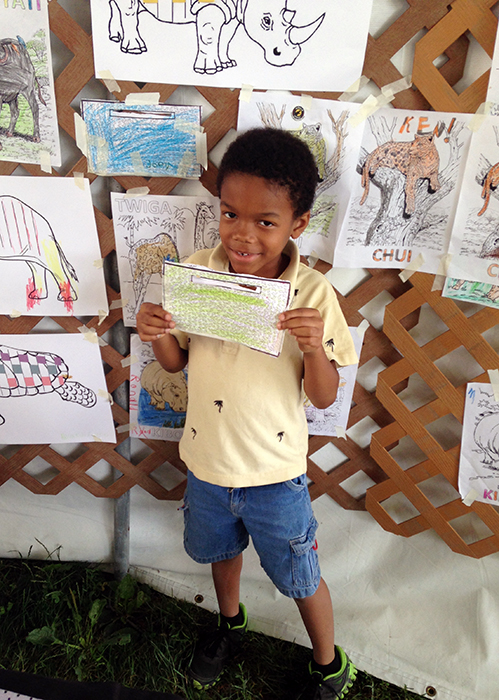Little Humans, Big Spirits: Crafts and Connections in the Kenya Family Activities Tent

“I have to go show the flip-flop guys! They’re going to be so proud, right?”
It was day five of the 2014 Smithsonian Folklife Festival, and an eight-year-old boy, beaming and sweaty, was proudly presenting to me the result of his labors in the Kenya Family Activities tent of the past hour or so: his own colorful “sculpture” of a rhinoceros, made with a hodgepodge assortment of flip-flop scraps, paper strips, and masking tape, complete with mancala beans for eyes.

As I walked with him to the Art of Recycling tent next door and introduced flip-flop artists Jonathan Lento and Francis Mutua Muvua to their newest fan, I thought about how that little boy’s enthusiasm captured so much of the spirit of the Festival.
As an intern for the Kenya program coordinating the Family Activities tent, I had the unique privilege of experiencing a microcosm of the discoveries, interactions, challenges, and joys of the Folklife Festival through the eyes of its most impressionable visitors.
Every day, I witnessed smiles of understanding spread across small faces when they realized they could make beautiful things out of recycled materials just like the Kenyan artists. I saw eyebrows arch in concentration as egg-carton mancala games became competitive, and I saw the moment of decision when a child overcame shyness to jump into a game of bladdah with kids from the Elimu Kenyan diaspora summer camp.
To me, the Festival is all about making connections, and the Family Activities tent served as a hub for connections of all sorts. Those who liked coloring animals could go talk to real wildlife rangers. Those who enjoyed paper weaving could watch a basket weaver in action. Those who were proud of their khanga designs could visit the khanga tent to see authentic examples of the traditional cloth.
Visitors also connected with each other—sometimes sitting for hours to chat or work together on crafts—and with volunteers and staff, including me. I loved interacting with the children and families who walked into the tent, whether to simply ask directions or to talk about Kenyan culture—or to return day after day to challenge me to mancala as was the case with one little girl!

I think one of the Kenyan participants, recycling artist Patrick Kibe, said it best when he remarked, after a session in the Family Activities tent teaching kids how to make jewelry from bottle caps, that the creative energy of children always gives him new ideas and is something all societies should treasure.
I agree that the atmosphere of innovation and resourcefulness in the tent became useful for me multiple times, as I found myself snipping plastic straws to make extra beads when we ran out or improvising new ways to hang our water bottle planters.
Whenever I walked by the “What Does It Mean to Be Human?” board near the Human Origins tent, I was struck by how many visitors’ replies on sticky notes referenced creativity, laughter, and exploration—things that abounded in the Family Activities tent throughout the Festival. I am beyond grateful to have been able to explore what it means to be human with children, families, volunteers, staff, and participants this summer!
Hopey Fink was a Kenya program intern and is a rising senior at Georgetown University studying anthropology and linguistics. She would like to thank Stephanie Gikkas for laying all the foundations for a successful Family Activities tent!

